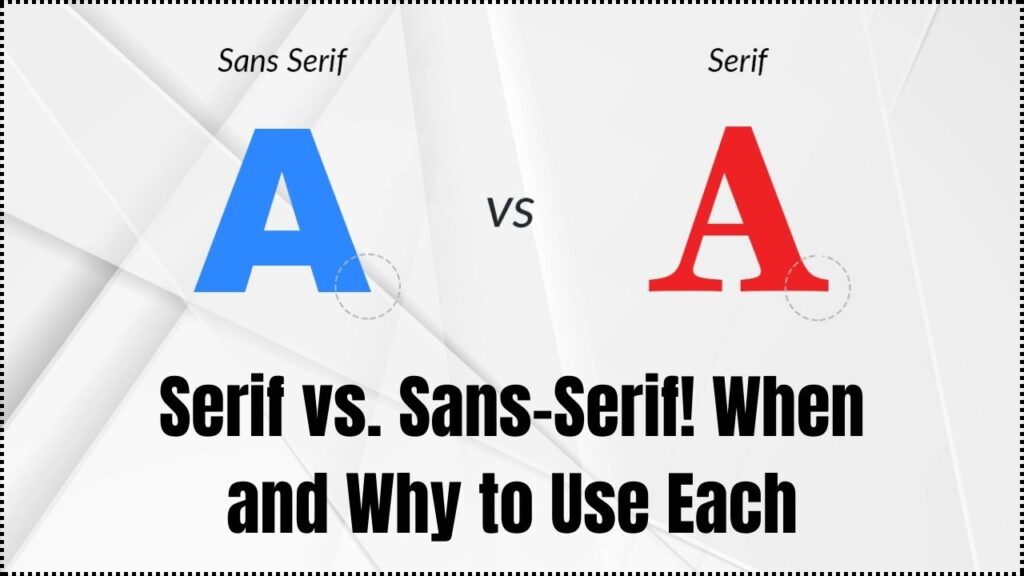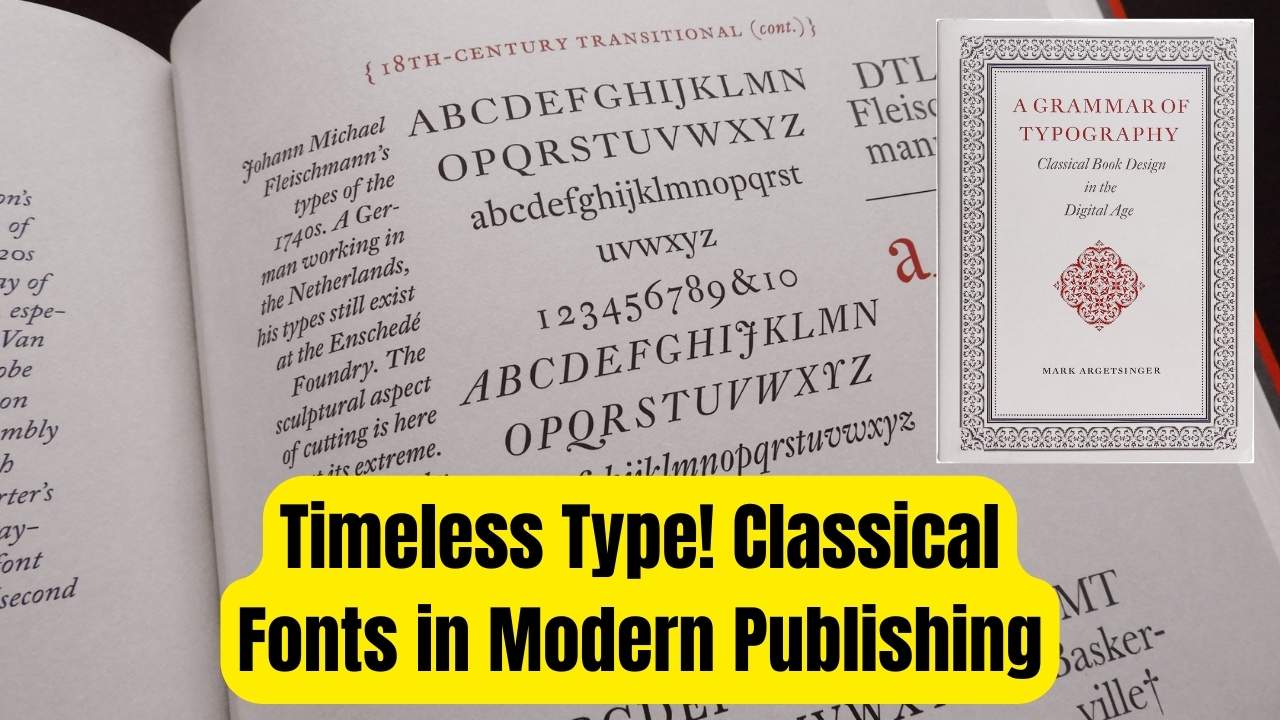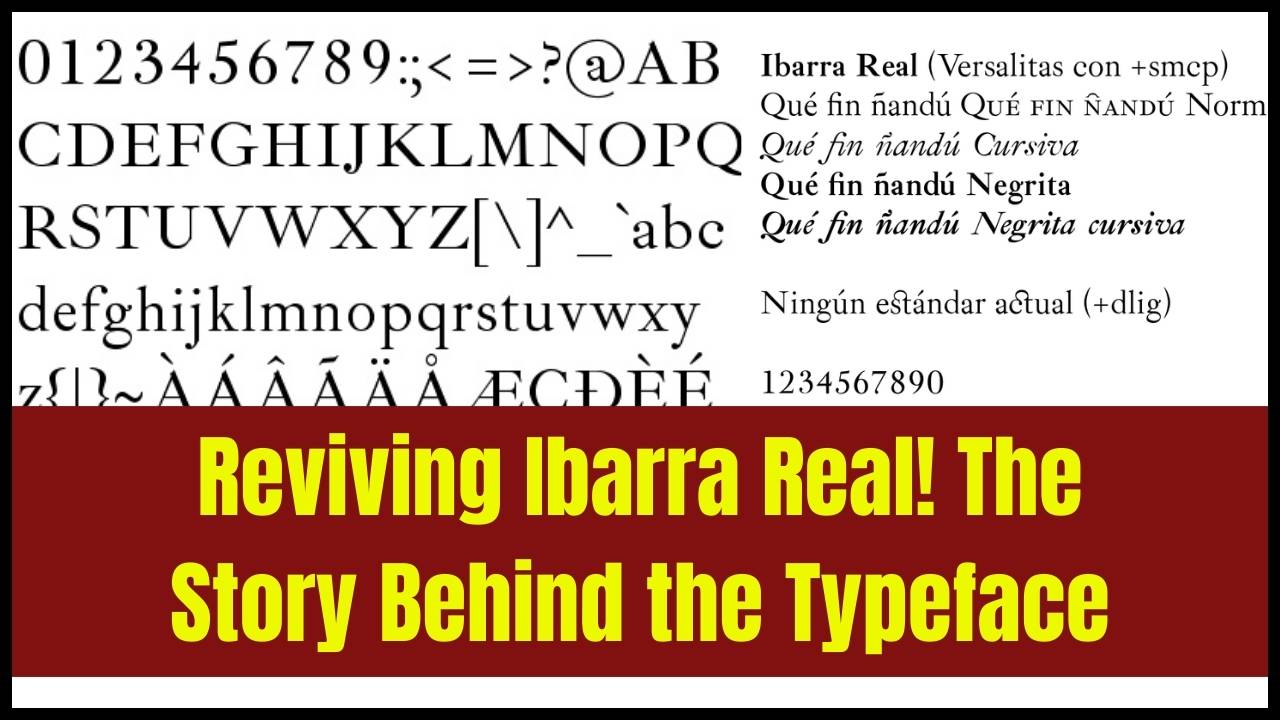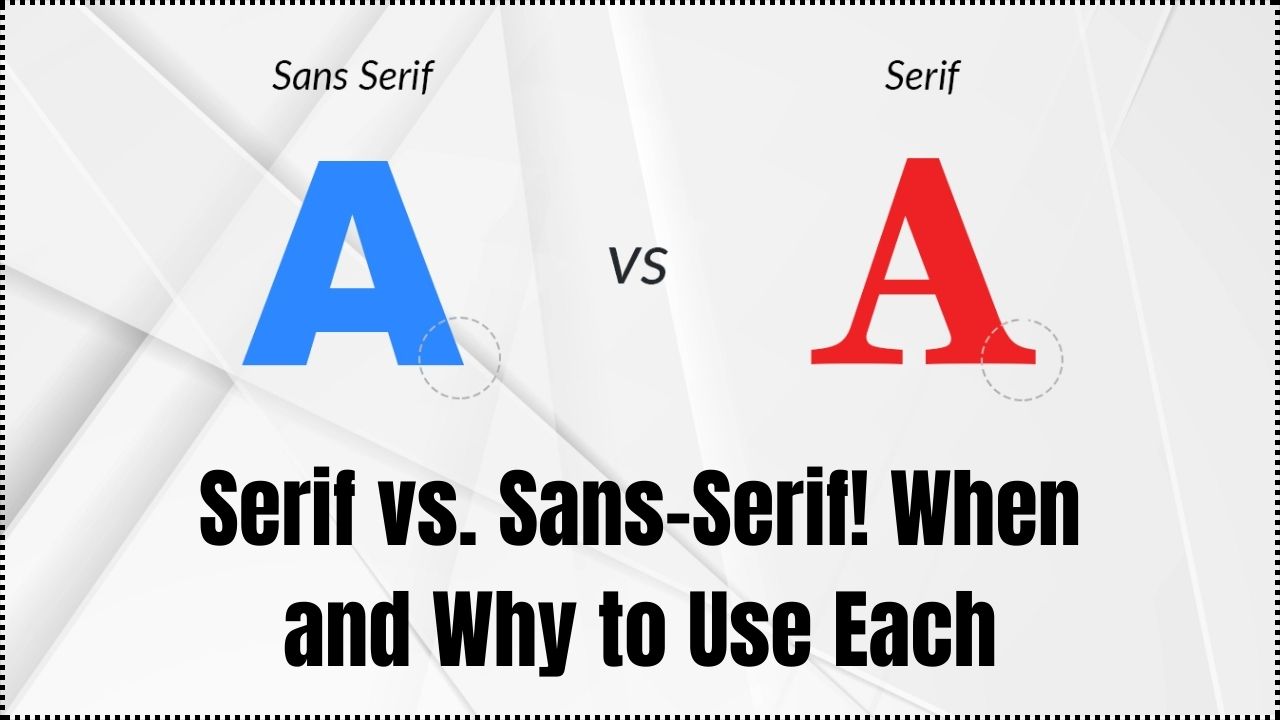
The choice between serif and sans-serif fonts can make or break the readability and appeal of your content, whether it’s a printed book, a website, or an email newsletter. As a designer, marketer, or content creator, you may often find yourself asking: Which font should I use, and when?
In this article, we will dive deep into the characteristics of serif and sans-serif fonts, when to use each, and how choosing the right typeface can elevate your content. With practical tips, clear examples, and insights backed by research, this guide will help you make an informed decision about font selection.
Serif vs. Sans-Serif
| Key Insight | Details |
|---|---|
| Serif Fonts | Fonts with decorative strokes at the ends of letters. |
| Sans-Serif Fonts | Fonts without the decorative strokes, offering a clean and modern look. |
| Best for Print | Serif fonts are traditionally better for print media, like newspapers and books. |
| Best for Digital | Sans-serif fonts are more legible on screens and better suited for web design. |
| Readability | Serif fonts improve readability in print, while sans-serif fonts excel on screens. |
| Popular Serif Fonts | Times New Roman, Garamond, Baskerville |
| Popular Sans-Serif Fonts | Arial, Helvetica, Futura, Calibri |
| Recommended Font Pairing | Combine serif fonts for body text and sans-serif for headings. |
| SEO Impact | Font selection can indirectly affect user engagement, affecting SEO ranking. |
Choosing between serif and sans-serif fonts is an essential decision that can greatly impact the readability, tone, and effectiveness of your content. Whether you’re working on a website, a printed book, or a professional document, understanding the strengths of each typeface will help you make the best choice for your audience.
By keeping these tips in mind and experimenting with font pairings, you can create designs that not only look great but are also user-friendly and easy to read. Remember, whether you prefer the traditional elegance of serif fonts or the modern simplicity of sans-serif fonts, the most important factor is that your content resonates with your audience and serves its purpose effectively.
Serif Fonts: A Classic and Trustworthy Choice
What Are Serif Fonts?
Serif fonts are characterized by small lines or decorations—called “serifs”—that extend from the ends of letters. These fonts are often considered more traditional and formal, evoking a sense of professionalism and trustworthiness. Serif fonts are highly effective for printed materials, where they are believed to help guide the reader’s eye along the text, making long passages of reading easier to follow.
When to Use Serif Fonts
Serif fonts are often preferred in situations that require a sense of authority or tradition. Here are some key scenarios where serif fonts shine:
1. Print Media
If you’re working with printed books, newspapers, magazines, or brochures, serif fonts are a go-to choice. They are known for enhancing readability, especially in lengthy texts, due to the serifs helping the eye track from one letter to the next.
For example, Times New Roman, a classic serif font, is still commonly used in books and newspapers for its ability to provide a smooth reading experience over long stretches of text.
2. Professional Documents
Serif fonts are perfect for formal settings, such as business reports, legal documents, and résumés. They convey a sense of professionalism and are often associated with well-established brands or institutions.
3. Branding and Logos
If you want your brand to appear established, authoritative, or classic, using a serif font in your logo can add that timeless appeal. Brands like The New York Times and The Wall Street Journal have used serif fonts for years to maintain their prestigious reputations.
Examples of Popular Serif Fonts
- Times New Roman
- Garamond
- Baskerville
- Georgia
These fonts are widely regarded as some of the best choices for traditional and formal materials.
Sans-Serif Fonts: Modern and Clean for the Digital Age
What Are Sans-Serif Fonts?
Sans-serif fonts, as the name suggests, lack the small decorative lines or strokes that characterize serif fonts. These fonts have a sleek, minimalist appearance and are often associated with modernity and simplicity. The absence of serifs makes them easier to read on screens, which is why they are frequently used for web design and digital interfaces.
When to Use Sans-Serif Fonts
While serif fonts are great for print, sans-serif fonts have a variety of uses, particularly for digital media. Here are some key areas where sans-serif fonts are ideal:
1. Websites and Digital Content
Sans-serif fonts are easier to read on digital screens, especially at smaller sizes. Websites, mobile apps, and digital advertisements benefit from the clean, modern look of sans-serif fonts. For instance, Arial and Helvetica are commonly used for their clarity and readability on websites.
2. Headlines and Signage
Sans-serif fonts are ideal for headlines, signages, and short bits of text that need to grab attention quickly. Their clean and bold appearance makes them perfect for titles and headings, where clarity is important.
3. Modern Branding
If your brand aims to convey a youthful, modern, or approachable image, sans-serif fonts are a great choice. Brands like Spotify and Apple use sans-serif fonts to promote a clean, contemporary aesthetic.
Examples of Popular Sans-Serif Fonts
- Arial
- Helvetica
- Futura
- Calibri
These fonts are some of the best examples of modern, readable sans-serif options for digital content.
How to Choose Between Serif and Sans-Serif
Choosing between serif and sans-serif fonts comes down to your specific needs and the context in which your content will be viewed. Here’s a step-by-step guide to help you make the right decision:
1. Consider Your Medium
- Print: Serif fonts are ideal for long-form text in books, newspapers, and print advertisements. Their ability to enhance readability over extended reading periods makes them a classic choice for print media.
- Digital: For websites, blogs, and apps, sans-serif fonts are generally the better option. Their clarity on digital screens—especially at smaller font sizes—improves legibility.
2. Understand the Tone of Your Content
- Traditional and Professional Tone: If you’re working on something formal or classic, such as legal documents or academic papers, serif fonts help to establish authority and trust.
- Modern and Approachable Tone: For modern, innovative, or casual content (like social media posts, tech blogs, or start-up websites), sans-serif fonts can convey the right sense of freshness and simplicity.
3. Focus on Readability
Consider your target audience. If you expect your content to be read on physical paper or for an extended period, serif fonts may be a better option for readability. If your audience will be consuming your content on a screen, sans-serif fonts are often the more legible choice.
4. Experiment with Pairing Fonts
Combining both serif and sans-serif fonts can offer a balanced look. A common design technique is to use a serif font for the body text and a sans-serif font for the headings. This combination creates contrast and guides the reader’s eye through the content while maintaining a polished and professional appearance.
Font Trends and Their Impact on Design
Staying Updated with Font Trends
The world of typography is constantly evolving. New font styles and trends emerge every year, influenced by shifts in design, technology, and culture. Some recent trends include:
- Geometric Sans-Serif Fonts: These fonts have symmetrical, even shapes and are popular in minimalist design.
- Custom and Display Fonts: More brands are opting for unique, custom-designed fonts to set themselves apart.
- Variable Fonts: These fonts allow for dynamic adjustments to the weight, width, or style of the font, providing flexibility across different devices and screen sizes.
Why Font Trends Matter
Staying on top of font trends can help you remain relevant in your industry. For digital marketers, for example, adapting to the most current design trends can increase user engagement and help your website stand out from the competition.
The Impact of Fonts on Branding
Fonts as a Reflection of Brand Identity
Fonts are not just tools for readability—they’re integral to your brand identity. The fonts you choose can communicate emotions, values, and the personality of your brand. Here’s how:
- Traditional Brands: Serif fonts like Garamond suggest a sense of sophistication and trust.
- Modern Brands: Sans-serif fonts like Helvetica communicate cleanliness, simplicity, and accessibility.
- Tech and Innovation: Fonts like Roboto or Futura often signal modernity and a forward-thinking mindset.
Consistency Across Platforms
Maintaining consistency in font usage across all brand materials—whether digital or print—is essential for creating a unified brand identity. Font choices should be part of your brand guidelines to ensure that your branding remains consistent, regardless of the medium.
SEO and Font Choices: Does It Really Matter?
You might wonder if the font you choose has any impact on your SEO ranking. While fonts themselves don’t directly affect search engine algorithms, user experience (UX) does. Here’s how your font choices can indirectly influence your website’s SEO:
- Readability: A more readable website keeps visitors engaged, reducing bounce rates. Fonts that are difficult to read can frustrate users, causing them to leave your site quicker.
- Mobile Optimization: Some fonts look great on desktop but become hard to read on mobile screens. Ensuring that your fonts are mobile-friendly can improve user experience and, in turn, impact SEO rankings.
- Loading Speed: Some fonts, especially custom or heavy web fonts, can slow down your website’s load time. A slow website can negatively affect your SEO ranking.
Frequently Asked Questions (FAQs)
1. What is the difference between serif and sans-serif fonts?
- Serif fonts have small strokes or decorations at the ends of letters, while sans-serif fonts lack these decorative strokes. Serif fonts are often used in print media, while sans-serif fonts are preferred for digital content.
2. Which font is better for websites?
- Sans-serif fonts are generally better for websites because they are easier to read on screens, especially at smaller sizes.
3. Can I use both serif and sans-serif fonts together?
- Yes! Mixing serif and sans-serif fonts can create a visually appealing and functional design. Typically, serif fonts are used for body text, and sans-serif fonts are used for headings.
4. What fonts are most commonly used in professional documents?
- Serif fonts like Times New Roman and Garamond are common in formal or professional documents because they are associated with authority and tradition.







